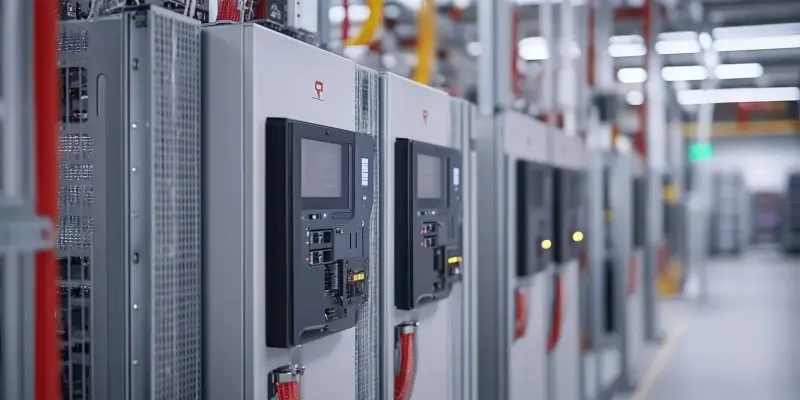As the demand for computational power continues to surge, the data center industry faces an urgent challenge in meeting rising energy needs efficiently and sustainably. The increasing adoption of AI and compute-intensive workloads has resulted in unprecedented levels of electricity consumption. The International Energy Agency (IEA) predicts that data centers could consume over 1,000 terawatt-hours (TWh) of electricity by 2026, highlighting the necessity for sustainable energy solutions. This pressing situation has sparked rapid advancements and innovations in power management and cooling technologies within the data center sector.
Sustainable Energy Sources
Renewable Energy Investment
The escalating energy demands of data centers have prompted industry leaders to invest heavily in sustainable energy sources. Companies are increasingly adopting on-site renewable energy installations, such as solar panels, to reduce their reliance on the traditional power grid. These installations offer a dual benefit: they lower operational costs over time and significantly cut carbon emissions, contributing to the fight against climate change. Moreover, many data center operators are entering into power purchase agreements (PPAs) with renewable energy providers. These agreements guarantee a steady supply of green energy and further solidify the industry’s commitment to sustainability.
Another innovative solution being explored is the potential use of small modular reactors (SMRs). These advanced nuclear reactors promise a reliable and consistent energy supply, which is crucial for data centers that require uninterrupted power. SMRs come with the added advantage of flexibility and scalability, making them suitable for various data center sizes and locations. The integration of such advanced technologies underscores the industry’s proactive approach to addressing energy challenges while maintaining a focus on environmental responsibility. By investing in renewable energy sources and exploring cutting-edge technologies, the data center industry is paving the way for a more sustainable future.
Energy Efficiency Measures
In addition to investing in renewable energy, data centers are implementing various measures to enhance their energy efficiency. One significant upgrade involves the enhancement of uninterruptible power supplies (UPSs), shifting to systems that operate in the megawatt range. This evolution allows data centers to handle higher workloads without compromising on power reliability. Additionally, increasing rack power capabilities to ranges of 40-100 kW per rack specifically for AI workloads ensures that high-power systems can be efficiently managed. These upgrades are crucial for maintaining operational efficiency and supporting the escalating demands of AI and other compute-intensive applications.
Parallel to hardware upgrades, innovations aimed at reducing energy consumption are being developed. AI-optimized chips and smaller language models (SMLs) are designed to perform tasks more efficiently, consuming less power while delivering robust performance. Techniques like query caching and carbon emissions-aware algorithms further enhance energy savings by optimizing how data is processed and managed. These comprehensive measures reflect a holistic approach towards energy efficiency, combining advanced hardware solutions with intelligent software innovations to create a more sustainable data center ecosystem.
Cooling Technologies
Water-Based and Advanced Cooling Methods
Cooling the vast amounts of heat generated by high-power systems in data centers is a challenge that traditional air cooling methods can no longer effectively address. Consequently, many data centers are adopting water-based cooling solutions, which significantly improve thermal management efficiency. Water cooling involves using chilled water to remove heat from servers, a method that is much more effective than air cooling. However, this technique poses sustainability challenges, especially in regions where water resources are scarce. To mitigate these concerns, some data centers are exploring closed-loop systems that recycle water, reducing overall consumption.
In parallel, advanced cooling technologies are gaining traction. Liquid cooling and immersion cooling with dielectric fluids, for instance, offer superior thermal management by directly submerging hardware components in cooling liquids. Direct-to-chip cooling involves delivering coolant directly to the heat-producing components, drastically improving efficiency. Moreover, the incorporation of ceramic components in circuit boards aids in better heat dissipation and enhances the overall durability of hardware. These innovations represent significant strides in cooling technology, ensuring that data centers can operate efficiently even as their energy demands continue to grow.
Experimental and Enhanced Cooling Solutions
Beyond the established cooling techniques, the data center industry is exploring experimental approaches to further enhance cooling efficiency. Underwater data centers, for example, leverage the natural cooling properties of deep-sea environments to manage thermal loads effectively. This method not only offers superior cooling but also utilizes the consistent temperature of ocean waters, providing a novel solution to cooling challenges. Another groundbreaking concept is space-based data centers, which aim to exploit the cold environment of space to manage heat, though this idea remains largely theoretical and faces practical challenges.
Additionally, enhancements to existing cooling systems are continuously being developed. Improving airflow efficiency within data centers can significantly reduce cooling requirements. Upgrading cooling towers with electric fans and employing nozzle technology for targeted cooling allows for more precise and efficient thermal management. These improvements not only enhance cooling performance but also contribute to overall energy savings. As data centers strive to balance the demands of high-power workloads with sustainability goals, these advanced and experimental cooling solutions play a critical role in shaping the future of the industry.
Summary and Future Outlook
As the demand for computational power keeps growing, the data center industry faces a significant challenge in efficiently and sustainably meeting the rising energy requirements. The increasing use of AI and compute-intensive tasks has led to unprecedented levels of electricity consumption. The International Energy Agency (IEA) forecasts that data centers might consume over 1,000 terawatt-hours (TWh) of electricity by 2026. This critical situation underscores the need for sustainable energy solutions. Consequently, there’s been a surge in advancements and innovations in power management and cooling technologies within the data center sector. Such innovations are crucial to ensuring that the industry’s energy consumption doesn’t escalate beyond control. Various technologies are being explored, ranging from renewable energy sources to more efficient cooling methods, to meet this demand. The ultimate goal is to achieve a balance where energy needs are met without compromising environmental sustainability. This ongoing evolution highlights the data center sector’s commitment to addressing its energy challenges responsibly.

